Soldier Story: William Blanchard Lingley
Soldier Story
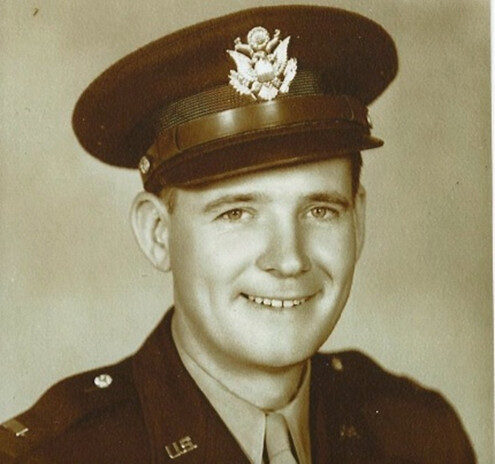
William Blanchard Lingley
Captain
442nd Regimental Combat Team
3rd Battalion, Headquarters Company
William Blanchard Lingley was born on January 27, 1912, in Cambridge, Massachusetts, to Henry Earnest and Alice Agatha (Derby Blanchard) Lingley. Father Henry emigrated in 1884 from London, England, to Boston, Massachusetts, at the age of one with his parents, James and Frances (Chipchase) Lingley. Mother Alice was born in Boston, Massachusetts. There were four sons in the Lingley family: William Blanchard, Albert Henry, Richard Chipchase, and Robert Derby.
Henry and Alice met at the New England Conservatory of Music and were both professional musicians. They married on April 3, 1911. In 1912 when William was born, the family was living at 9 Eustis Street, Cambridge. By 1920, they had moved to 24 Summit Avenue, Bogota, Bergen County, New Jersey. After moving soon after to Watertown, New York, in 1922 the Lingley family moved to Long Beach, California. Henry was an accomplished pianist, organist, and vocalist – and son Bill began singing in church choirs at the age of ten. They moved to Santa Barbara in June 1924. After the devastating earthquake there in 1925, however, they moved to Salinas, Monterey County.
In 1930, the family was living at 48 Stone Street in Salinas. Both Henry and Alice were music teachers, and also director and pianist, respectively, for the Salinas Choral Society. Bill and his brothers often sang in many church choirs of all denominations. He studied voice with his father from the age of 14, and sang as a soloist in church choirs. Bill was also captain of his Salinas Union High School football team.
After graduating in 1930, Bill attended Arizona State College on a scholarship. While there, he took courses in public speaking. Unfortunately, his father Henry died unexpectedly on April 28, 1932. Bill then left college to return home to Salinas where he worked to support the family. He was employed for a time by Pacific Gas & Electric Company.
Bill met local well-known dance and dramatics instructor, Mrs. Maxine Matilie (Brown) Maus. By 1939, they had moved to the Eagle Rock area of Los Angeles where he was employed by Standard Oil Company doing public relations work. They were married on June 11, 1939, at the home of Maxine’s uncle and aunt, Mr. and Mrs. Robert Cameron, in Beverly Hills. By April 1940, the couple was living at 15359 Roxford Street in the Sylmar area of Los Angeles. Residing with them was Maxine’s widowed mother, Maud Brown. Bill was assistant manager of a Standard Oil service station and Maxine was a teacher at a private school.
A few months later, when Bill signed his draft registration card on October 16, at Local Board No. 179 in North Hollywood, his address was initially written as 4733 Vesper Avenue, Van Nuys. This was crossed out and written in pencil was 4380 Workman Street in San Fernando. His point of contact was his wife Maxine Matali Lingley at the Vesper Avenue address. He was employed by Standard Station, Inc. at 15301 Ventura Boulevard in Van Nuys. Bill was 6’ tall and weighed 185 pounds; he had brown hair and blue eyes. Maxine died on December 27, 1940, at Good Samaritan Hospital in Los Angeles and she was buried at Rosedale Cemetery.
On February 11, 1942, Bill Lingley enlisted in the U.S. Army at Fort MacArthur, San Pedro, California. It was noted that he had attended one year of college. He was assigned to the Air Corps, where he studied communications.
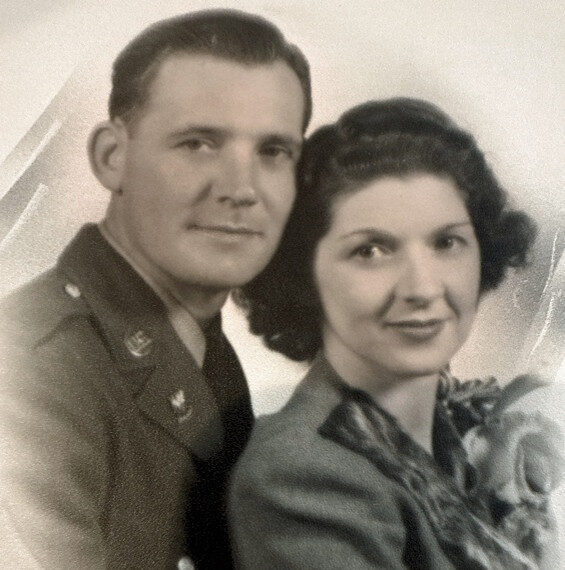
On October 7, 1942, Bill married Dorothy Marie Klauer. She was born on August 11, 1911, in Akron, Iowa, to Edward Peter and Julia Klauer. Dorothy was a graduate of the University of South Dakota. They were married in the Post Chapel at the U.S. Army-Air Force Chanute Field, near Champaign, Illinois. At the time, Bill was a teletype maintenance and installation instructor at Chanute Field, and Dorothy was a home service director for the Gas Service Company in Kansas City, Missouri. They went to Chicago for their honeymoon.
Left: Wedding photo of Bill and Dorothy
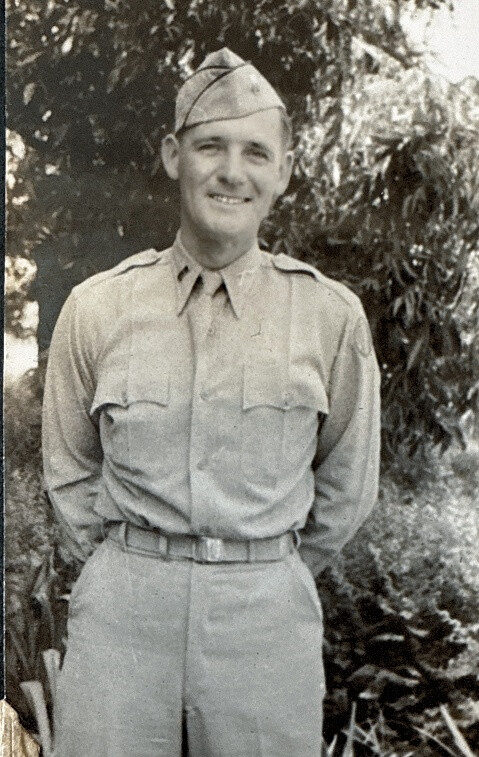
Bill was chosen for Officer Candidate School (OCS) at Fort Benning, Georgia, in January 1943. After he graduated in May and was commissioned a Second Lieutenant, he remained there as an instructor in all phases of training, including lectures on orientation and “why we are fighting.”
Right: February 1943 at OCS
On April 4, 1944, Lingley was transferred to Camp Robinson, Little Rock, Arkansas, where the couple’s first child was born on June 9. That fall, Dorothy and their infant son went to Akron, Iowa, to stay with family, while Bill was sent to Fort George G. Meade, Maryland, for overseas shipment. He was assigned to the 442nd Regimental Combat Team in France.
Below: Three photos in October 1944 in various uniforms prior to leaving the US
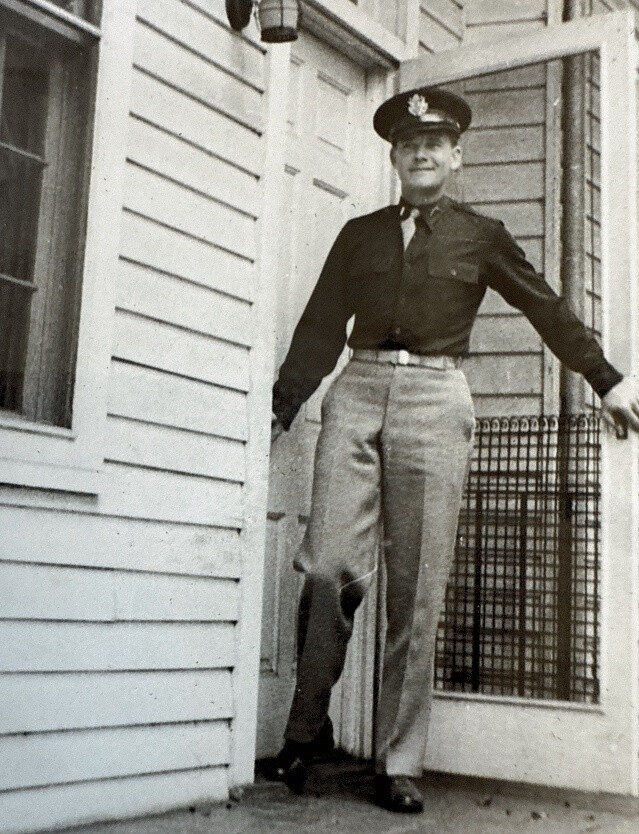
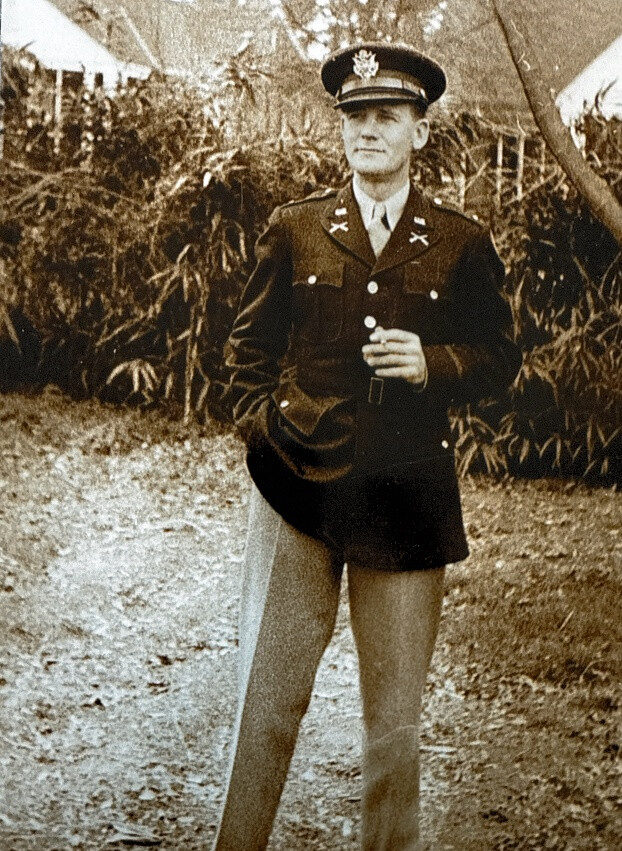
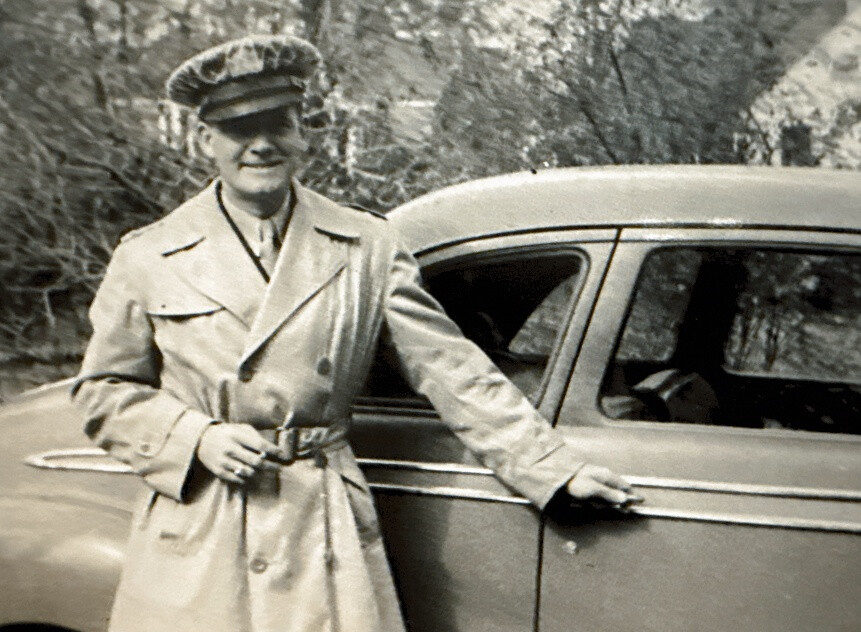
1st Lt. Lingley left the US on October 12 on the RMS Queen Mary and arrived in Greenock, Port Glasgow, Scotland. He was sent on to Chester, England, from where he was transported to Omaha Beach in Normandy. He finally arrived to the Vosges area at Épinal near where the 442nd was fighting in the Rhineland-Vosges Campaign.
Lt. Lingley was assigned to Headquarters Company, 3rd Battalion as a platoon commander. After a few days on the line he injured his back and was evacuated to a military hospital located, as he later said, “at a mineral springs.”
Below: Lt. Lingley, on the right, with two friends, 1945 France
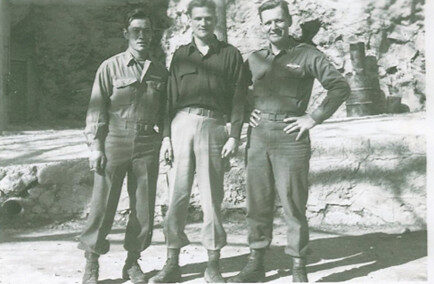
After his recovery, Lt. Lingley returned to his unit, which by this time was in the Rhineland-Maritime Alps Campaign in southern France. He became the motor officer for 3rd Battalion, in charge of two platoons. The role of the 442nd in the Maritime Alps was mostly a defensive position guarding the French-Italian border from attack by the German Army in Italy. After 35 days high in the mountains awaiting replacement troops, he was relieved after Christmas and enjoyed a few days off at the Carleton Hotel in Nice. This time in France was nicknamed the “Champagne Campaign” as men were often able to enjoy time in Nice and Menton on the coast.
Below: Lt. Lingley, 1945 France
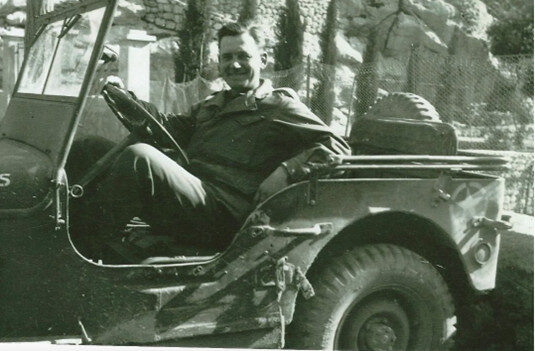
The 442nd was in southern France from November 23, 1944, until March 15, 1945, when they were relieved and moved in relays to the new staging area at Marseilles. On March 20-22, the 442nd (without its 522nd Field Artillery Battalion who were sent to Germany) left France to fight in the Po Valley Campaign for the final push to defeat the Nazis in Italy. They arrived at the Peninsular Base Section in Pisa on March 25 and were assigned to Fifth Army.
The objective of the 442nd was to execute a surprise diversionary attack on the western anchor of the German Gothic Line. This elaborate system of fortifications had been attacked in the fall of 1944, but no one had yet been able to pry the Germans loose from the western end. The Gothic Line in this area was hewn out of solid rock, reinforced with concrete, and constructed to give all-around protection and observation. The Germans were dug into mountain peaks rising almost sheer from the coastal plain, bare of vegetation save for scanty scrub growth.
The Combat Team left their initial staging area and moved to a bivouac at San Martino, near the walled city of Lucca. Starting on April 3, the 442nd began its participation in a surprise attack on the Germans at Mount Folgorito. From this point, it was a steady stream of pushing the enemy north and one victory after another during the month of April.
The 442nd moved farther north, finally taking the key rail center of Aulla on April 25, penetrating as far north as Torino. On April 28, they were in the already liberated town of Genoa, which had surrendered the day before. What began as a diversionary attack was relentlessly pursued by the Combat Team, resulting in a complete breakthrough of the Gothic Line in the west. By the end of April, Germans were surrendering by companies, battalions, and regiments.. Despite orders from Hitler to fight on, the German forces in Italy surrendered on May 2, a week before the rest of the German forces in Europe surrendered on May 9, 1945.
Following the surrender, the 442nd moved to bivouac at Novi Ligure. On May 16 the 442nd was moved to Ghedi Airfield near Brescia, where they guarded and processed German prisoners of war. They moved a month later, on June 14, to Lecco, and, finally, on July 24 to the Livorno/Pisa/Florence area. Lt. Lingley enjoyed a few days of rest pass in Stresa on Lake Maggiore.
During an awards ceremony held in Livorno, Lingley received a Bronze Star Medal from 442nd RCT commander Colonel Virgil R. Miller. The citation reads:
For meritorious service in combat in April 1945 in Italy. Lt. Lingley was ordered to bring forward a convoy of jeeps bearing urgently needed ammunition for operations on Mount Folgorito. The route to the forward supply depot lay over a mined road only partially swept by the engineers and under direct hostile observation and within enemy machine gun and mortar range. Because of the hazards involved, he asked for volunteer drivers only, then personally led the convoy driving the lead jeep. When the convoy reached its destination, it was suddenly subjected to a concentration of enemy mortar shells. Lt. Lingley rendered first aid to the wounded and had him evacuated to the aid station. When the shelling lifted, he unloaded the supplies and led the convoy back.
Lingley was promoted to Captain while in Italy. As 3rd Battalion motor officer, he was in charge of the gradual turning over of the Combat Team’s 426 vehicles at a staging area in Livorno.
Captain Lingley left Italy on a Victory ship on November 1, 1945. They stopped briefly in Oran, Algeria, and arrived at Hampton Roads, Virginia, on Thanksgiving Day, November 22. After processing out of the Army, he went by train to Akron, where he was reunited with his wife, son, and new daughter on November 29 for a second Thanksgiving Day.
For his military service, Captain William B. Lingley was awarded the: Bronze Star Medal with one oak leaf cluster, European-African-Middle Eastern Campaign Medal with three bronze stars, World War II Victory Medal, Army of Occupation Medal, Distinguished Unit Badge, and Combat Infantryman Badge. He was posthumously awarded the Congressional Gold Medal on October 5, 2010, along with the other veterans of the 100th/442nd Regimental Combat Team. Conferred by the U.S. Congress, the award states: “The United States remains forever indebted to the bravery, valor, and dedication to country these men faced while fighting a 2-fronted battle of discrimination at home and fascism abroad. Their commitment and sacrifice demonstrates a highly uncommon and commendable sense of patriotism and honor."
In 1950, Bill and wife Dorothy were living at 753 Bungalow Drive in the El Segundo area of Los Angeles with their children William Edward, Barbara Ann, Robert Henry, and James Arthur. Bill was employed as a service station manager and then as a retail representative overseeing many stations. In 1955 they moved to Redondo Beach and were founding members of the St. Lawrence Martyr Catholic Church where they were closely involved in the development of the church where they were closely involved in the development of the church where they were closely involved in the development of the church. In 1973, they moved to Big Bear City at Big Bear Lake and again were instrumental in helping to rebuild their new church, St. Joseph’s in the Pines Catholic Church.
Bill Lingley always spoke very highly of the soldiers of the 442nd Regimental Combat Team. In later years, one of his sons read to him a passage in the book The Greatest Generation by Tom Brokaw. The passage was written by 442nd veteran Senator Daniel K. Inouye, and describes the 442nd’s famous rescue of the “Lost Battalion” during the Vosges Campaign. Lingley’s son asked him if he remembered the battle. His father teared up and replied, “I sure do. I am lucky to be here.”
William B. Lingley died on November 1, 2000, at Big Bear Lake, California. He was buried at the Riverside National Cemetery, 22495 Van Buren Boulevard, Riverside, Section 50, Site 1075. Dorothy K. Lingley died on December 27, 2008, and was buried next to her husband. She was survived by their four children, 10 grandchildren, and 13 great-grandchildren.
Brother Albert served in 1943 in the U.S. Army in 1st Infantry Division, 33rd Field Artillery Battalion, Battery C in the Tunisian and Sicilian Campaigns. Brother Robert served in the U.S. Army from 1943 to 1945, Third Army, 244th Field Artillery Battalion, including the Battle of the Bulge and Czechoslovakia.
Researched and written by the Sons & Daughters of the 442nd Regimental Combat Team in 2025 with assistance by the Lingley family, including Bill Lingley’s personal written recollections of his life.